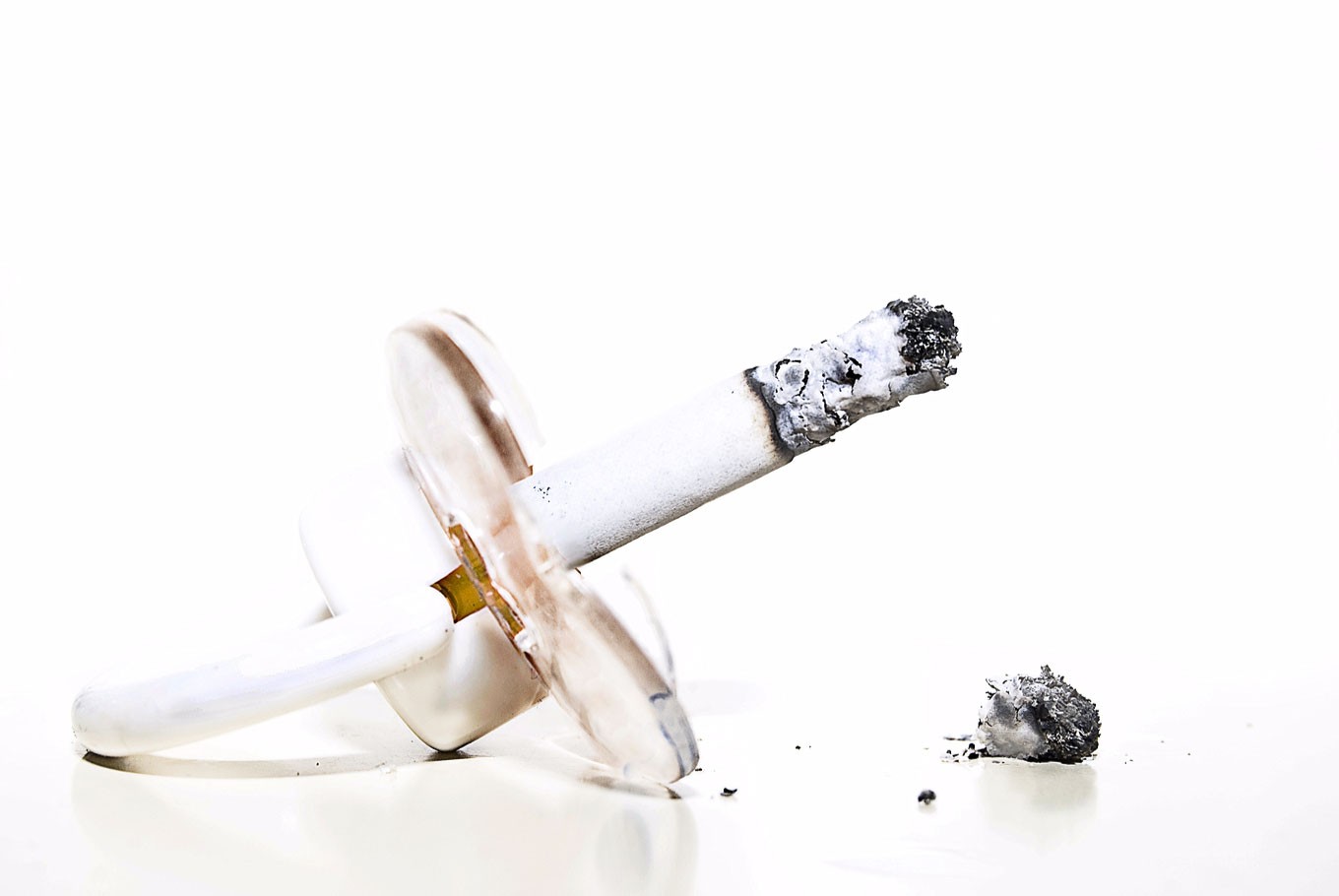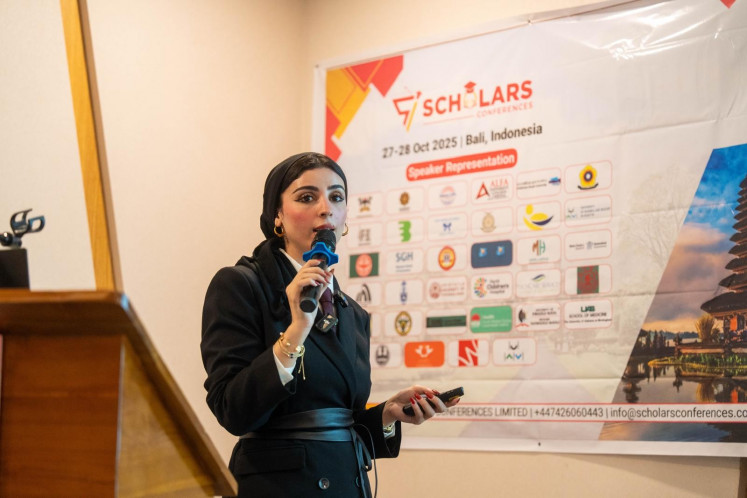Popular Reads
Top Results
Can't find what you're looking for?
View all search resultsPopular Reads
Top Results
Can't find what you're looking for?
View all search resultsWhy passive smoking is harmful for your children
Change text size
Gift Premium Articles
to Anyone
S
moking near a child can be considered child abuse, says Adam Goldstein, a practitioner, professor and director of the Tobacco Intervention Program at the University of North Carolina, the US.
He explained that repeatedly exposing children to tobacco smoke is a form of abusive behavior akin to leaving a child in a car on a hot day with the windows closed, or driving under the influence of alcohol while your child is in the car.
Tobacco smoke worse for children than adults
According to tempo.co, 2015 data from the Health Ministry's research and health development department (Balitbangkes) recorded that more than 40 million Indonesian children are passive smokers because they live with a parent who smokes or are often around adult smokers.
A cigarette contains more than 250 active carcinogenic chemicals, including formaldehyde, benzene, vinyl chloride, arsenic, ammonia and hydrogen cyanide. But did you know that exhaled tobacco smoke contains five times more carbon monoxide, three times more tar and nicotine, and up to 46 times more ammonia than inhaled smoke? That means the chance of getting cancer is 50 times more for passive smokers compared to active smokers.
Children’s lungs are smaller than those of adults, and children also breathe faster than adults. Therefore, children can inhale more hazardous chemicals considering their weight compared to adults in the same amount of time. Moreover, children’s immune systems are not fully developed, making them vulnerable to respiratory infections such as bronchitis and pneumonia. Babies who are often exposed to tobacco smoke for a long period of time, or whose mother is a smoker, are at higher risk of Sudden Infant Death Syndrome (SIDS) compared to babies who are not exposed to tobacco smoke.
UNICEF data from 2012 shows that pneumonia is the primary cause of acute respiratory infections (ARI) due to inhaling secondary tobacco smoke. This ranked the highest on the list of causes of death in Indonesian children, accounting for 14 percent or around 21,000 child fatalities, surpassing deaths from AIDS, malaria and tuberculosis.
(Read also: The best way to stop smoking: stop trying)
Impact of tobacco smoke on children’s health
Other than the two main problems above, secondary tobacco smoke inhaled by children and infants or by a fetus carried by a mother who smokes can cause:
- Low birth weight. Pregnant mothers who inhale tobacco smoke or mothers who are active smokers have a higher chance of giving birth to undersized babies. Babies who are born with a low birth weight have a higher risk of various health issues.
- Weak lungs. Babies who constantly inhale and exhale tobacco smoke from birth will develop weaker lungs, which can increase the risk of various respiratory diseases.
- Heavy or acute asthma. Secondary tobacco smoke will cause children who suffer from asthma to relapse more seriously and more frequently.
- Respiratory problems. Children who live under one roof with parents who smoke are more vulnerable to coughing, coughs with phlegm, wheezing and breathing trouble compared to those with non-smoking parents.
- Cognitive impairment. Exposure to secondary tobacco smoke in the long-term may affect or damage a child’s learning ability. Tobacco smoke is highly toxic, even when inhaled in low amounts. More than 21.9 million children all over the world are estimated to be at high risk of experiencing reading difficulties due to tobacco smoke. Higher exposure to tobacco smoke is also linked to math and visuospatial reasoning skills being below average.
- Low IQ. Children whose mothers are active smokers (smoke one pack a day during pregnancy) have been shown to achieve 2.87 points lower in IQ tests compared to children with non-smoking parents.
- Behavioral disorders. A child from a non-smoking mother who was constantly exposed to secondary tobacco smoke during pregnancy, and children with an actively smoking mother, have the same risk of Attention Deficit Hyperactivity Disorder (ADHD) and orderliness issues. (kes)












